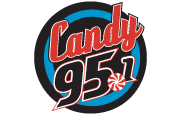So in the future when the food supply is gone you’ll go to the remnants of a Wal-Mart and buy your hologram dinner. It’ll look just like a big steak and mash potatoes but in reality it’ll be a twinkie from 2002 and radio active squirrel. – Nick J
Does the word “nanotechnology” make you feel hungry? No? Well, future generations may feel differently. A fascinating new study released by the American Chemical Society is predicting that edible holograms will one day decorate various food items.
An international research team has already created a “laser-based method to print nanostructured holograms on dried corn syrup films.” If that doesn’t get your stomach rumbling nothing will! In all seriousness, study authors say this groundbreaking technology may make it much easier in the future to ensure food safety, label products, and provide sugar content information.
When people use the term “hologram,” they often think of distant visions of the future or works of science fiction. In reality, holograms are already in widespread use across modern society. Today, the public can find holograms on credit cards, various pieces of product packaging, and driver’s licenses.
Generally speaking, manufacturers can laser-print holograms onto various metal surfaces such as aluminum. When it comes to edible holograms, researchers have proposed using nanoparticles to imprint holograms on food items. There’s just one problem to this approach: tiny particles generate reactive oxygen species, which can be harmful if eaten.
This motivated the research team behind the new study to find a safer, faster, and more efficient way to produce edible holograms. To that end, they created a solution consisting of corn syrup, vanilla, and water. They then dried the solution into a thin film, coating the film with a fine layer of non-toxic black dye. Making holograms safe to eat
From there a technique called direct laser interference patterning was used to remove most of the dye, leaving behind only raised, nanoscale lines forming a diffraction grating.
When light hits that remaining nanostructure, the light diffracts into a rainbow pattern, complete with varying colors depending on the angle one views it from. Researchers could even control the intensity and range of colors displayed by changing up the spacing between lines in the grating or the sugar levels of the corn syrup film.
Edible holograms aren’t quite ready for grocery store shelves just yet. For instance, study authors still have yet to apply their method to a food-grade dye. Still, perhaps we should all be bracing ourselves for some holographic dining experiences in the future.
Via StudyFinds

